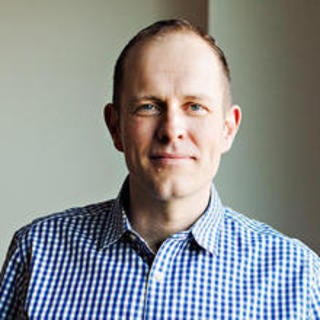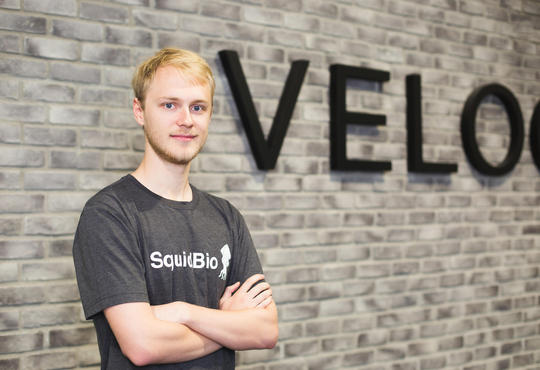 When a child is diagnosed with craniosynostosis, they need complex and high-risk surgery. Collaborative research between the University of Waterloo and The Hospital for Sick Children (SickKids) in Toronto, aims to equip surgeons with precise algorithms and tools to help them plan and carry out these delicate operations.
When a child is diagnosed with craniosynostosis, they need complex and high-risk surgery. Collaborative research between the University of Waterloo and The Hospital for Sick Children (SickKids) in Toronto, aims to equip surgeons with precise algorithms and tools to help them plan and carry out these delicate operations.
Jochen Koenemann
Professor, Faculty of Mathematics
Chair, Department of Combinatorics and Optimization
There’s no one playbook
Craniosynostosis affects 1 in 2,500 infants. It causes some or all of the bones in a child’s skull to fuse prematurely, leaving inadequate space for normal growth.
“When this happens too early, the brain could be limited in terms of growth,” says Dr. John Phillips, Plastic/Craniofacial Surgeon at SickKids. “You could end up with increased intracranial pressure, which could eventually lead to brain injury and blindness.”
Correcting craniosynostosis requires a difficult five-hour surgery when the child is less than a year old. The child’s skull is cut into a series of pieces which are then reconfigured to create a more typical shape. To do this, the surgeon must determine where to place cuts to ensure optimal skull shape as the child grows. Each instance of craniosynostosis is unique to each individual child. Since there’s no one playbook for each individual child, surgery relies on the intuition and experience of a rare number of surgeons.
Math for medicine
The team at SickKids approached researchers in University of Waterloo’s Faculty of Mathematics to help. Dr. Phillips and Dr. Jim Drake, Surgeon-in-Chief and Chief of Perioperative Services, wanted to find the right research partner to aid in planning and improving craniofacial surgical techniques.
“We’re relying on the art and skill of each surgeon. I don’t think this should be art,” says Dr. Phillips. “This should be mathematical, three-dimensional science.”
Jochen Koenemann, Professor and Chair of the Department of Combinatorics and Optimization, and Ricardo Fukasawa, Associate Professor, Combinatorics and Optimization, were eager to contribute.
“When Waterloo was asked to help improve an operation for infants, there was only one possible answer in my mind: yes!” recalls Koenemann, adding “This project has provided a rare opportunity for us mathematicians to contribute in a meaningful way and improve the lives of young children.”
Their first step was to understand what was done during surgery. Both mathematicians attended a surgery and took part in extensive discussions with the surgeons. This built a good understanding of what a craniosynostosis operation typically entailed, and what the surgeons hoped to improve using mathematics.
Next, the researchers translated the problem into mathematical language; developing a precise mathematical model that captured the most important aspects of the surgery.
With this model firmly in place, they began developing an algorithm with two goals in mind: efficiency and accuracy. Using data provided by SickKids, Koenemann and Fukasawa began testing the model and algorithm with the surgical team.
These mathematicians hope the model and algorithm may be used to train surgeons unfamiliar with the process, and also reduce surgery time.
Koenemann says, “It’s really only just the beginning. We hope to use this research as a springboard to other surgical applications.”
Bridging expertise
To practically apply the algorithm in the operating room, the cut locations need to be marked on the patient accurately during surgery.
Enter Christopher Woodbeck, a fourth-year undergraduate student in Waterloo’s Mechatronics Engineering program, who had recently completed a co-op term at SickKids. Inspired by a real-time projection-mapping art project called “Project Omote,” he realized that a similar approach could be used for craniosynostosis surgery. Today, he’s working with Koenemann and Fukasawa to perfect the algorithm and create a projection system that will further guide surgeons.
Based on the optimal plan determined by the algorithm, the system projects the optimal cut lines directly on to the patient during surgery.
“All the pieces of the puzzle already existed. Projection mapping and real-time tracking has been around for some time,” says Woodbeck. “We’re using these technologies to bridge the gap between the mathematicians and the surgery.”
Just the beginning
Thanks to this collaborative approach, Dr. Drake says “We’ve found a phenomenal way to bridge the expertise at their end with our clinical need at this end.”
After five years, applications of the algorithm are proving successful. The surgical plans continue to closely match those of experienced surgeons, and help surgical teams perform more efficiently in the operating room. In some cases, the algorithm has reduced the infant’s time in surgery by up to an hour, which means less time under anesthetic.
The success of this collaboration has opened up additional future possibilities. This research team from Waterloo and SickKids is hoping to apply the algorithm and projection system to more complicated reconstructions and other surgical procedures as well.
“As soon as you get out of your box, and start talking to engineers and mathematicians, it opens a whole different world,” says Dr. Phillips.






